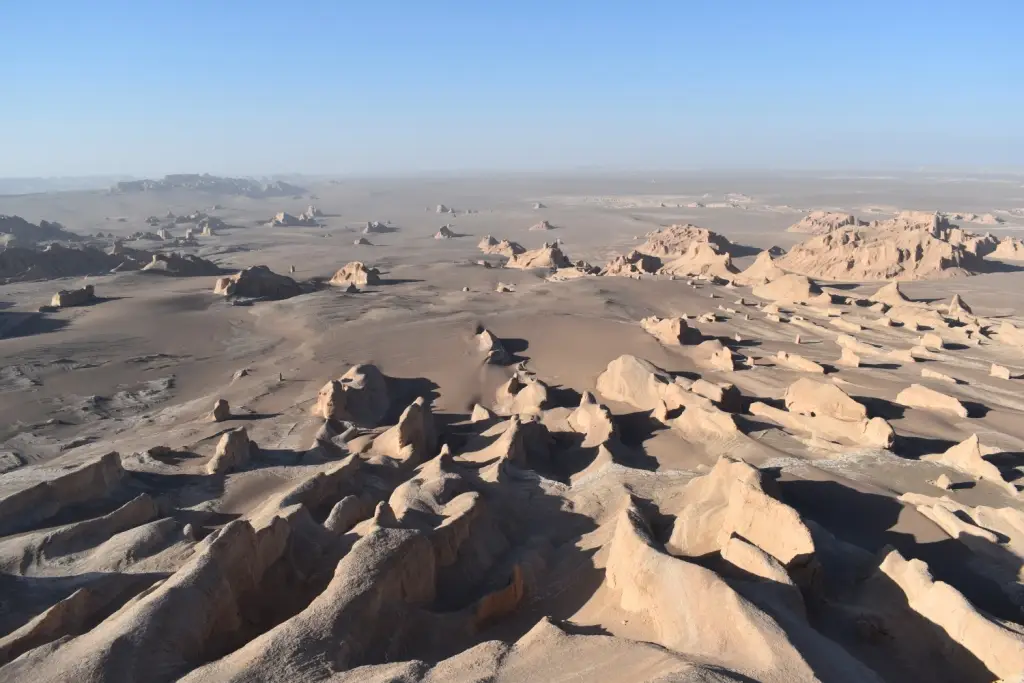
Zarrin
"Zarrin," meaning "golden" in Farsi, owes its name to the changing light on the dunes, which become intensely golden in the late afternoon at sunset. This L-shaped stretch of sand dunes is approximately 70 km long and 15 km wide, located in Yazd province in the heart of the Iranian plateau. Surrounded by high rocky mountains, it is easy to navigate yet offers a surreal landscape where you can see snow-capped mountains in early spring and winter while treading on some of Iran's most beautiful sand dunes. On the periphery of the dune lie ancient ab anbar, traditional water reservoirs that were once used by locals to gather rainwater for consumption. Drinking this unfiltered rainwater, rich in natural minerals, was believed to be key to good health. Nowadays, water purification systems are installed in the tiny villages surrounding the vast dunes, such as Haji Abad Zarrin. The southeastern periphery of the dunes boasts some of the densest Saxaul (Haloxylon ammodendron) forests, and nearby you'll find a large expanse of playas or sabkhas. The trek in this spectacular area can be undertaken over three days and nights, with the option of carrying all logistics oneself or having 4WD support.
Maranjab
Popular and busy during the season, especially on weekends, Maranjab offers a quieter experience a few kilometers east towards Ghasre Bahram Caravanserai and Sefid Ab rangers headquarters. This is where the mighty Kavir National Park starts, and a written permit is required to enter. If you seek the beauty of desert sand dunes, camels, a spectacular salt lake, an island (Sargardan), a hand-dug well for camels, and ancient caravanserais that were on the Silk Road, Maranjab is ideal. With its proximity to Tehran, it offers a real adventure in a short time. The desert's altitude is 850 m above sea level, and on a clear winter day, Mount Damavand is visible from here.
Lut
For desert lovers who have seen the rest of the world's deserts, Lut is by far the most varied and spectacular. Located in southeastern Iran and accessible via Kerman or Zahedan cities, Lut has been the hottest place on Earth, reaching 70.7°C (159.3°F) and the driest. It boasts the tallest yardangs, the highest sand dunes, and the largest nabkhas globally. Additionally, there are vast erosional trenches, hydrological networks, tectonic basins, rare salt phenomena, and extensive rocky plains (hamadas). Alongside these natural wonders, there are historic villages and human settlements on its periphery, home to 6,000 residents. In July 2016, Lut was included in the UNESCO World Heritage List, the first such natural wonder in Iran to be listed. Whether you wish to see and feel the desert in a safe 4x4 or undertake a multi-day trek in the heart of this plain, Caspian Trek is your partner. For the hard trekkers, we offer a unique 10-day trekking expedition into this desert with full logistical support by locals who know this vast expanse of natural wonder like the back of their hands. Write to us to organize the desert trek of a lifetime. The best season is from late October until late February.
Haj Ali Salt Lake
This beautiful and wild salt lake near Damghan is a very doable yet absolutely mind-boggling destination. This 40 km by 10 km salt lake is inundated with water in the spring, making it impassable. However, come autumn, you're in for a surprise. As you enter the heart of the salt lake, layers of salt gradually appear on the mud, forming perfect hexagons a few kilometers in. To trek this desert, you'll need to carry enough water to last you three days. We suggest camping for two nights, although it is possible to trek the entire length in two days and one night.
Caspian Trek can organize any desert expedition on foot or by vehicle in any desert of Iran, be it Lut, Mesr, Zarrin, Maranjab, or any other. Simply email us with your desired trip, and we will do our utmost to please!

